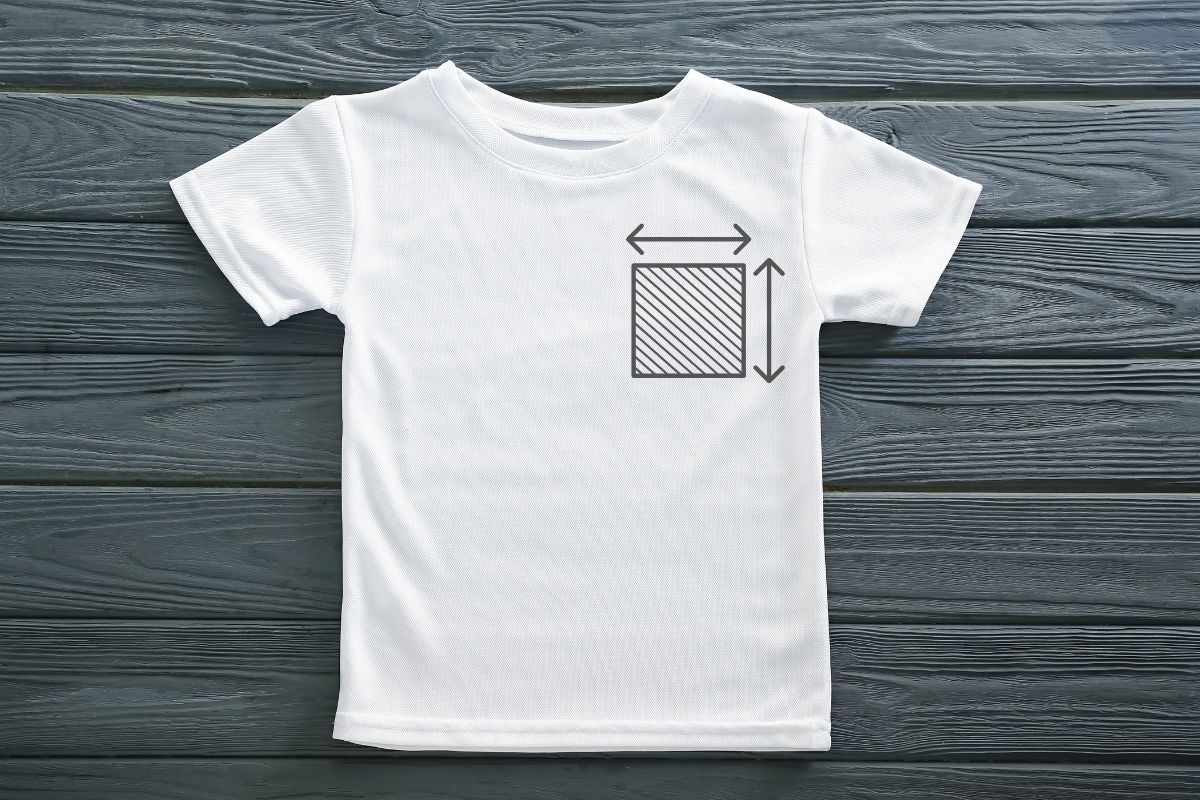High-visibility (hi vis) clothing is crucial for keeping workers safe in low-light conditions. Whether you’re on a construction site, directing traffic, or working at night, wearing hi vis gear can make a significant difference to your safety. Choosing the right hi vis clothing ensures you are easily seen, reducing the risk of accidents.
There are various types of hi vis clothing, including vests, jackets, and overalls. Each type has its own unique benefits and is designed for specific environments and tasks. Understanding the different options available can help you select the best gear for your needs and ensure compliance with safety standards.
Safety standards for hi vis clothing, such as ANSI 107-2004, provide guidelines for design and performance. Staying informed about these standards helps you make the best purchasing decisions and maintain your gear properly, extending its life and effectiveness.
Key Takeaways
- Hi vis clothing is essential for worker safety in low-light conditions.
- Different types of hi vis clothing are designed for specific tasks and environments.
- Following safety standards ensures proper selection and maintenance of hi vis gear.
The Importance of Hi Vis Clothing
Hi vis clothing is essential for ensuring the safety of workers in construction, road maintenance, and other high-risk environments. It enhances visibility, ensures compliance with safety regulations, and can significantly reduce the risk of accidents and injuries.
Visibility and Safety for Workers
Hi vis clothing improves visibility for workers, especially in low-light or high-traffic areas. The bright colors and reflective materials make it easier for others to see workers, significantly lowering the chance of accidents. For instance, high-visibility clothing with reflective strips can improve nighttime safety, making workers visible from greater distances. This increased visibility is crucial in preventing accidental injuries and ensuring a safer working environment.
Regulatory Compliance and Standards
Wearing hi vis clothing is not just about safety; it’s also about complying with safety regulations set by agencies like the Occupational Safety and Health Administration (OSHA). These regulations mandate specific standards for visibility and material quality. Compliance helps avoid legal issues and potential fines. High-visibility garments often need to meet stringent guidelines for color, reflectivity, and design to ensure optimal safety in various work settings.
Reduction of Accidents and Injuries
By improving visibility, hi vis clothing plays a crucial role in reducing accidents and injuries at the workplace. Workers wearing hi vis attire are less likely to be struck by moving vehicles or machinery. Statistics show that improved visibility can lead to a noticeable decrease in workplace accidents. This not only protects workers but also enhances productivity by reducing downtime caused by injury-related absences. It also fosters a culture of safety within an organization.
For further reading on specific guidelines and performance specifications for safety apparel, you can visit the article on FR Clothing: The Importance of Proper Labeling.
Types of Hi Vis Clothing
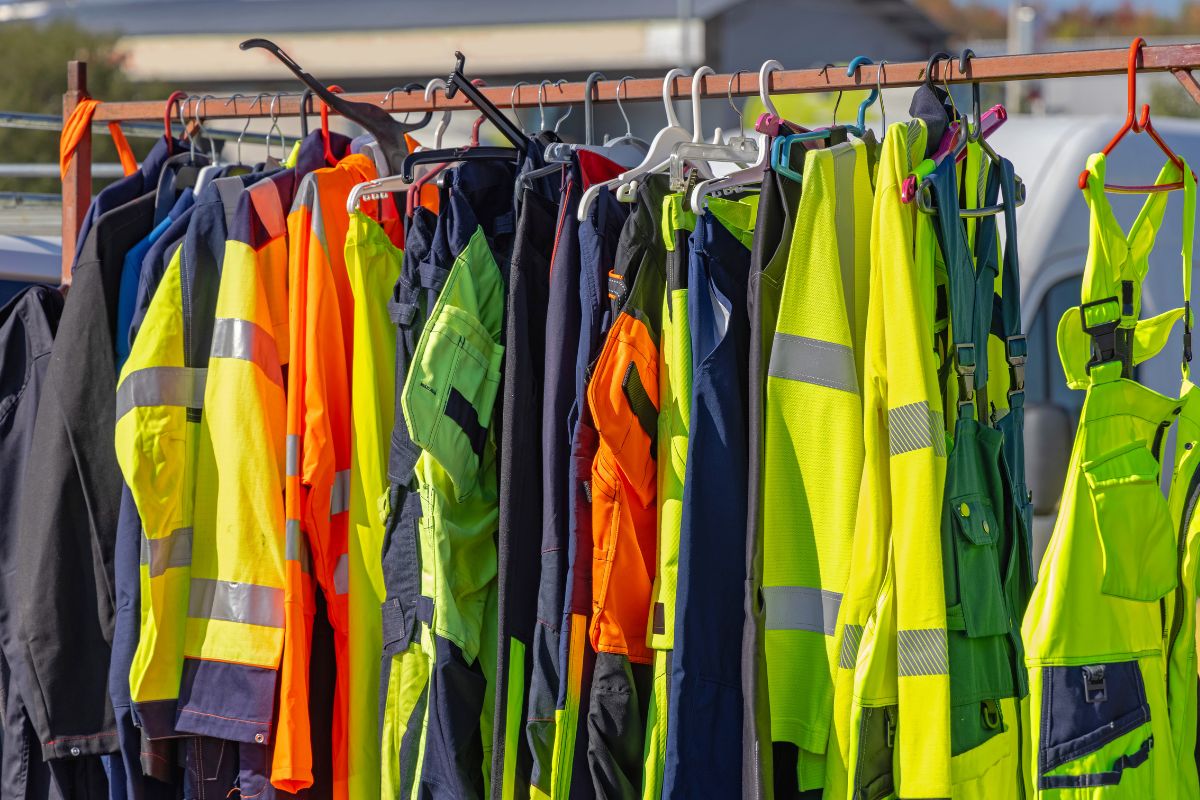
Hi vis clothing serves a crucial role in maintaining safety in various work environments. This section covers two main categories: vests and jackets, as well as shirts and pants, detailing their key features and uses.
Hi Vis Vests and Jackets
Hi vis vests are often made from fluorescent materials such as neon yellow or orange. They are designed to be lightweight and breathable, making them ideal for warm weather. Reflective strips are a common feature, enhancing visibility during low-light conditions. Class 1 vests offer the minimum level of visibility and are suitable for areas with slow-moving traffic.
Hi vis jackets provide more coverage and protection against elements like wind and rain. They combine fluorescent material with reflective stripes for maximum visibility. Different types of jackets include waterproof, insulated, and softshell jackets. Class 2 and Class 3 jackets offer higher levels of visibility and are used in environments with faster-moving traffic or complex backgrounds.
Hi Vis Shirts and Pants
Hi vis shirts, like vests, come in fluorescent colors such as yellow and orange. They can be long-sleeved or short-sleeved, made from materials that wick away moisture and keep you cool. Reflective materials are strategically placed to enhance visibility. These shirts are typically rated Class 2 for medium visibility requirements.
Hi vis pants are essential for workers needing full-body visibility. They are usually made from durable, fluorescent materials and include reflective strips around the legs. Such pants are beneficial in high-risk environments where maximum visibility is crucial. Class 3 pants provide the highest level of visibility and are often paired with other hi vis clothing to ensure complete coverage.
Selection Criteria for Hi Vis Clothing
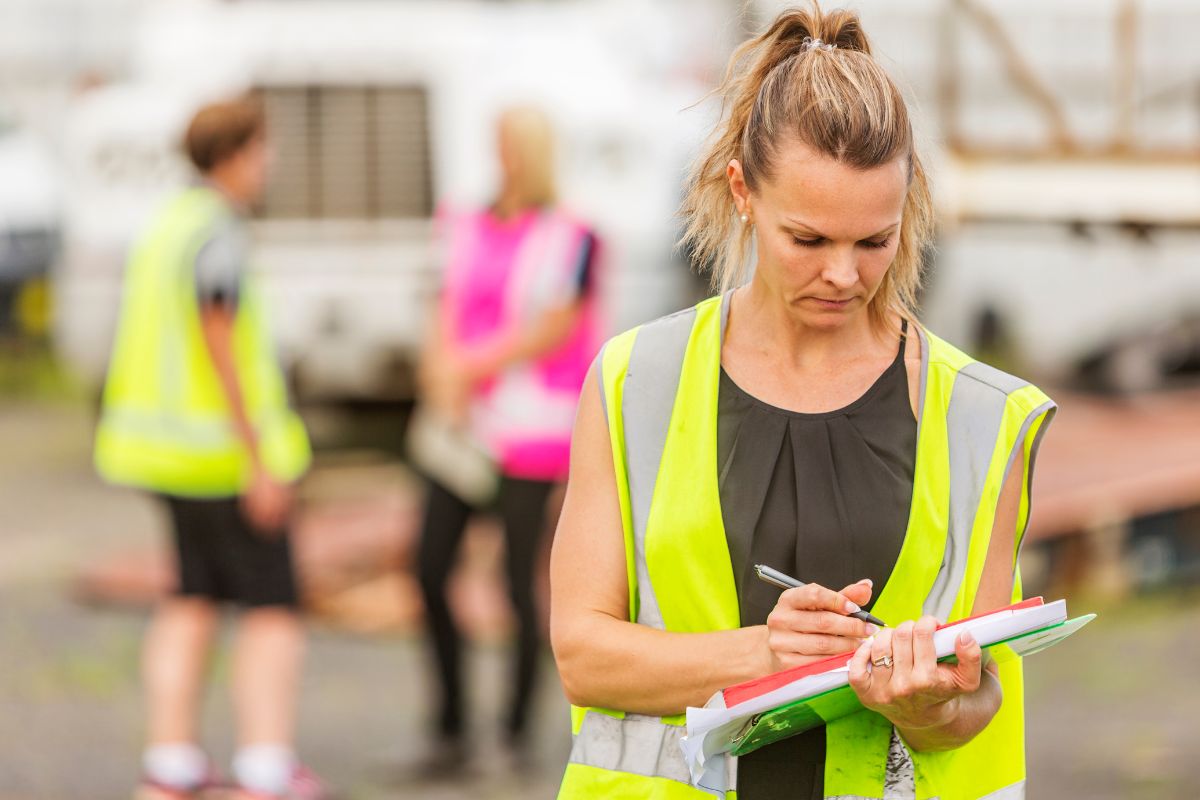
When choosing high-visibility clothing, it’s important to consider several key factors including the material and durability, fit and comfort, visibility features, and appropriateness for different weather conditions.
Material and Durability
The material and durability of high-visibility clothing are crucial. Look for garments made from strong, tear-resistant fabrics like polyester or a polyester-cotton blend. These materials can withstand harsh working conditions and frequent washing, making them long-lasting. Reinforced stitching is also important to improve durability. Ensuring the clothing is durable will protect your workforce and reduce the need for frequent replacements.
Fit and Comfort
Fit and comfort are essential for high-visibility clothing to be effective. Choose garments that offer a comfortable fit to facilitate ease of movement. Sizes should be appropriate for the range of workers, from small to extra large. Adjustable features like waistbands, cuffs, and closures can help provide a better fit. Ensuring comfort helps workers stay focused on the job without feeling restricted by their clothing.
Visibility Features
Visibility features are perhaps the most defining element of high-visibility clothing. Look for clothing that includes reflective tape, reflective stripes, or other reflective materials. These elements are designed to reflect light and make the wearer visible in low-light conditions, such as at night or during foggy weather. The placement of reflective strips on the shoulders, torso, and legs enhances visibility from all angles. The choice of color is also important, with bright colors like neon yellow or orange being highly recommended for daytime visibility.
Appropriate for Weather Conditions
Select high-visibility clothing that is suitable for various weather conditions. For hot weather, lightweight and breathable fabrics that wick away sweat are ideal. In contrast, for cold weather, look for insulated or layered options that provide warmth while still being visible. Also, consider waterproof or water-resistant materials for rainy conditions. Having the right clothing for different weather conditions ensures that workers remain comfortable and visible at all times.
Safety Standards and Requirements
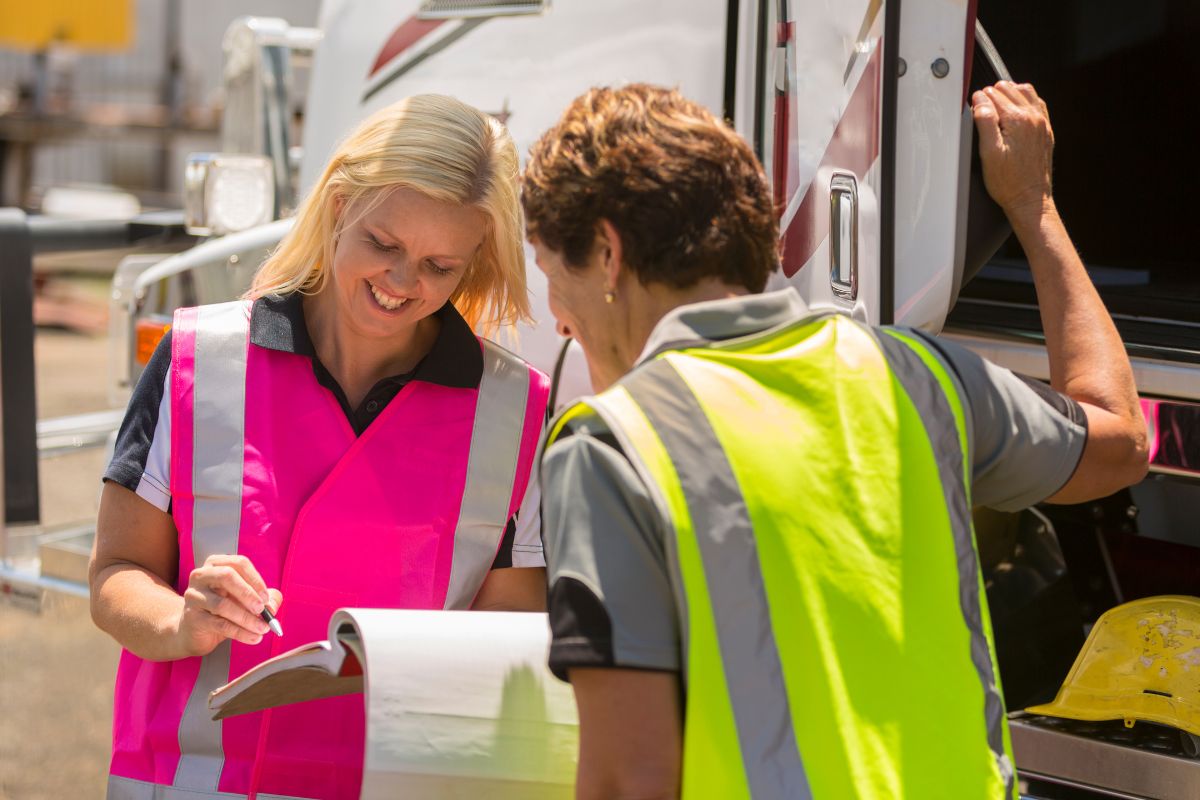
High-visibility (hi-vis) clothing is essential for worker safety, especially in environments with heavy machinery and low visibility. It must meet specific standards and requirements to ensure maximum protection.
Understanding EN ISO 20471
EN ISO 20471 is the international standard for high-visibility clothing. It specifies the requirements for the materials, design, and performance of hi-vis clothing. This standard ensures that the clothing provides adequate visibility during both day and night.
Key points:
- Background Material: The background fabric must be fluorescent and cover a specific minimum area.
- Reflective Tape: Reflective tape is essential for night visibility and must be sewn or adhered to the clothing in specific patterns.
- Performance Testing: Garments are subjected to various tests, including colorfastness and reflective performance, to ensure they meet visibility requirements.
OSHA Guidelines for Hi Vis Clothing
OSHA (Occupational Safety and Health Administration) provides guidelines for hi-vis clothing to protect workers exposed to traffic, construction, and other hazardous environments. OSHA does not have a specific standard for hi-vis clothing but references ANSI/ISEA 107, a key U.S. standard for high-visibility safety apparel.
Key points:
- ANSI/ISEA 107: This standard classifies hi-vis garments into classes based on their visibility performance.
- Worksite Requirements: OSHA requires employers to ensure that workers in high-risk environments wear appropriate hi-vis clothing.
- Compliance: Employers must conduct hazard assessments and provide appropriate personal protective equipment (PPE), including hi-vis clothing, to workers.
Classifications of High Visibility
Hi-vis clothing is classified based on its use and the level of visibility it provides. These classifications help in choosing the right gear for specific job roles and environments.
Key points:
- Class 1: Suitable for low-risk environments, such as parking lot attendants, and provides the least amount of visibility.
- Class 2: For workers near traffic moving at speeds up to 25 mph or in complex backgrounds, like construction workers.
- Class 3: Offers the highest level of visibility for high-risk environments, such as highway and emergency responders. It includes more reflective material and larger areas of fluorescent fabric.
- Performance Classes: Include Performance Class 1, 2, and 3, with Class 3 providing the most protection.
Ensuring that your hi-vis clothing meets these standards and classifications is crucial for maintaining safety in various work environments.
Care and Maintenance of Hi Vis Clothing

Taking care of your hi vis clothing is essential for durability and effectiveness.
To keep your hi vis clothing in top shape, always follow care label instructions precisely. These guidelines help maintain the material’s reflective quality and ensure long-lasting wear.
When washing, use mild detergent without bleach. Harsh chemicals deteriorate the fabric and diminish reflectivity. Cold water is preferable to preserve the colors and reflective materials.
Avoid drying hi vis clothing in direct sunlight. Sunlight can fade the bright colors and damage the reflective strips. Opt for air drying indoors or use a dryer on a low-heat setting.
Inspect your hi vis clothing regularly for wear and tear. Look for any rips, holes, or frayed edges. Damaged safety gear should be repaired or replaced immediately to maintain its safety features.
For optimal maintenance, store your hi vis clothing properly. Keep it in a clean, dry area, away from oil, dirt, and direct sunlight. Consider using a garment bag for additional protection.
Here is a quick checklist for maintaining your hi vis clothing:
- Wash: Use mild detergent, cold water
- Dry: Avoid direct sunlight, use low heat
- Inspect: Check for wear and tear, repair or replace as needed
- Store: Clean, dry area, away from direct sunlight
By following these steps, you’ll ensure that your hi vis clothing remains effective and extends its lifespan.
Industry-Specific Considerations for Hi Vis Clothing
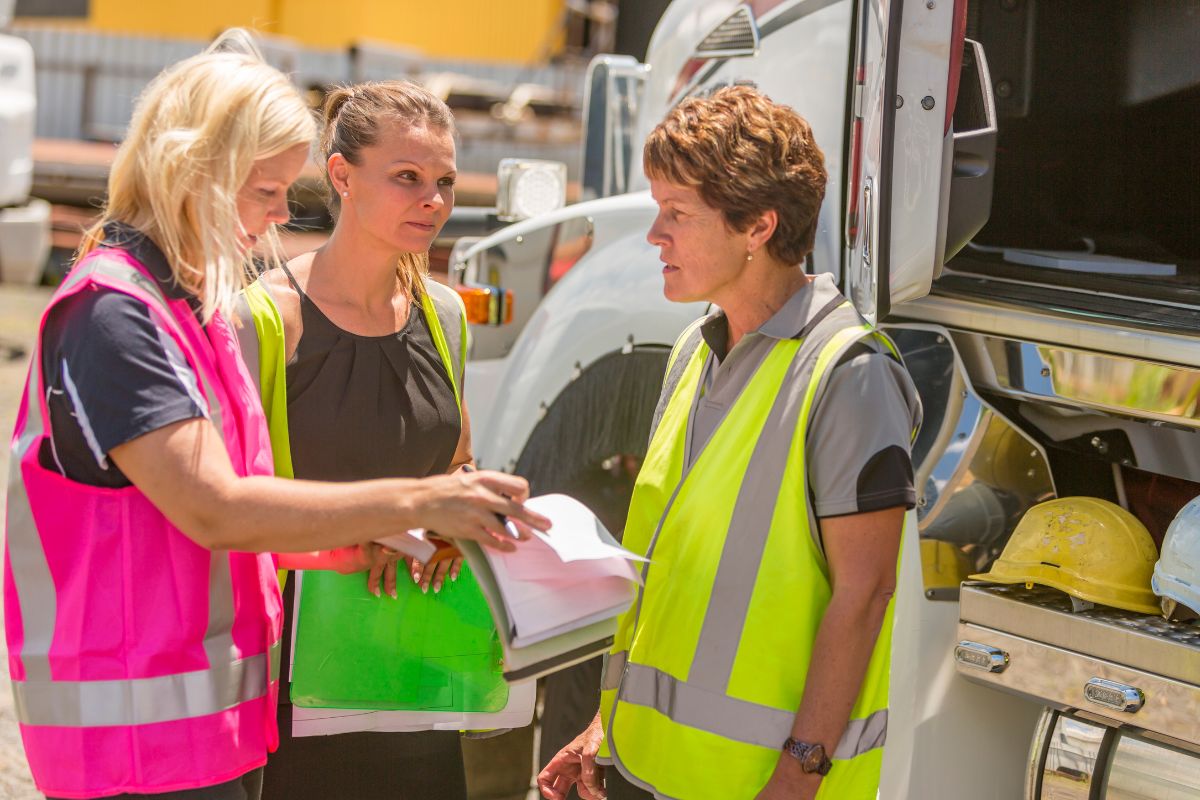
Hi vis clothing needs differ across various industries due to unique safety hazards and requirements. Workers in these fields must wear the appropriate gear to stay visible and safe.
Construction and Roadwork
Hi vis clothing is crucial for construction workers and road crews. Construction sites and roadwork zones have many hazards, such as moving vehicles and heavy machinery. Workers need bright, reflective vests and jackets to ensure they stand out, especially in low light.
Key Features:
- Bright Colors: Typically fluorescent yellow, green, or orange.
- Reflective Strips: Added visibility during nighttime or poor weather conditions.
- Durability: Clothing must withstand harsh conditions and frequent use.
Employers should provide gear that meets ANSI safety standards. Workers should wear the appropriate level of visibility protection based on the job’s risk factors.
Emergency Responders
Emergency responders like police officers, firefighters, and paramedics need hi vis clothing to stay noticeable in hazardous situations. Visibility is essential when dealing with traffic accidents, fires, or medical emergencies.
Crucial Considerations:
- Reflective Tape: Enhances visibility in low light or nighttime conditions.
- Specialized Materials: Flame-resistant fabrics for firefighters or waterproof materials for paramedics.
- Mobility and Comfort: Gear must allow quick movements without hindering performance.
It’s vital for emergency responders to have gear that not only increases their visibility but also meets their specific operational needs.
Warehouse and Facilities
In warehouses and other large facilities, hi vis clothing helps prevent accidents involving forklifts, pallet jacks, and heavy equipment. Employees need to be easily visible to avoid injuries in busy environments.
Key Elements:
- High Visibility Vests: Easy to put on and take off throughout the day.
- Custom Fit Options: Ensures comfort and effectiveness for different body types.
- Breathable Fabrics: Keeps employees comfortable during long shifts.
Employers should ensure that hi vis gear is readily available and regularly maintained. Safety training on the importance of visibility can further reduce workplace accidents in these settings.
Providing the right hi vis clothing for each industry keeps workers safe and helps prevent accidents.
Purchasing and Supply of Hi Vis Clothing
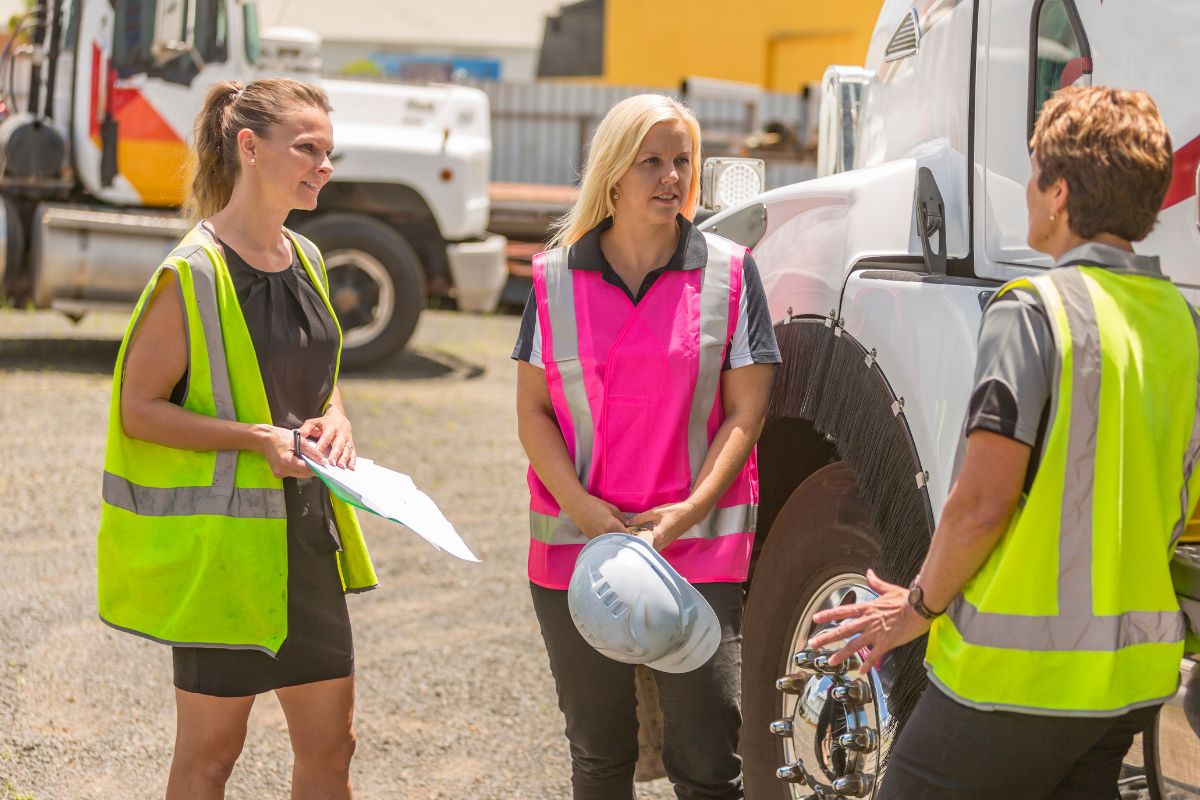
When managing the purchase and supply of hi-vis clothing, it’s critical to choose the right suppliers, consider bulk order costs, and ensure that employees comply with safety regulations. Here are essential points to guide you through these aspects.
Choosing the Right Suppliers
Finding reliable suppliers is crucial. Begin by researching various vendors who specialize in hi-vis workwear. Look for suppliers with a strong reputation, competitive pricing, and good reviews.
Check if the suppliers meet industry safety standards. Certifications such as EN ISO 20471 ensure the visibility and durability of the clothing. You may also want to visit their facilities if possible to assess the quality first-hand.
Customization options, such as adding company logos, can be essential. Ensure the supplier can meet these needs without compromising on delivery times. Establish a solid relationship with suppliers to secure better deals and consistent quality.
Bulk Orders and Cost Considerations
Ordering hi-vis clothing in bulk can significantly reduce costs. Start by conducting a needs assessment to determine how much workwear you require. Larger orders often come with discounts, so calculate your needs carefully.
Find suppliers who offer bulk pricing and negotiate for better rates. Ask about any minimum order quantities to understand what volume qualifies for discounts. It’s also wise to inquire about lead times to ensure timely delivery.
Be mindful of storage space and inventory management. Ensure you have sufficient storage to maintain your stock without compromising on quality. Proper management can prevent supply shortages and wastage, saving costs in the long run.
Ensuring Employee Compliance
Ensuring that employees comply with wearing hi-vis clothing is essential for safety. Start by educating your staff about the importance of hi-vis gear in preventing accidents and injuries. Regular training sessions can emphasize the role of visibility in their safety.
Implement policies that require employees to wear hi-vis clothing at all necessary times. Make it a part of the job requirements and conduct regular compliance checks. Non-compliance should be addressed with clear consequences to maintain safety standards.
Offer incentives for compliance, such as rewards or recognition programs. Providing comfortable and well-fitting hi-vis clothing can also encourage employees to wear it consistently, increasing overall workplace safety.
Frequently Asked Questions
High-visibility clothing is essential for worker safety, and it’s important to understand the different classes, colors, and requirements to ensure compliance and effectiveness.
What are the different classes of high-visibility clothing, and when should each be used?
High-visibility clothing is divided into three classes. Class 1 is for low-risk areas, such as parking lot attendants. Class 2 is for moderate-risk environments, like construction sites. Class 3 is for high-risk zones with high-speed traffic or low visibility conditions.
How do the ANSI high visibility standards define suitable clothing colors?
The American National Standards Institute (ANSI) defines suitable high-visibility colors as fluorescent yellow-green, fluorescent orange-red, and fluorescent red. These colors are chosen for their high visibility in various lighting conditions and environments.
What requirements must high-visibility shirts meet to be OSHA compliant?
High-visibility shirts must comply with ANSI/ISEA 107 standards to meet OSHA requirements. This includes having specific background and retroreflective material dimensions and ensuring the colors are sufficiently bright. The seams and stitching should not interfere with the visibility. More detailed guidance can be found in resources like the Design guidelines for safety of in-vehicle information systems.
Which colors are considered hi-vis and acceptable for workplace safety gear?
Acceptable high-visibility colors for workplace safety gear are fluorescent yellow-green, fluorescent orange-red, and fluorescent red. These colors provide the highest level of visibility in various work environments and lighting conditions. Ensure the garments meet the fluency requirements specified in standards.
How often should high-visibility clothing be replaced or checked for compliance?
High-visibility clothing should be regularly inspected and replaced if it shows signs of wear, fading, or damage. A general guideline is to replace these garments every six months to a year, depending on usage and exposure. Always make sure they comply with safety standards.
Can high-visibility clothing be worn in non-work environments for additional safety?
Yes, high-visibility clothing can be worn in non-work environments to enhance safety. This includes activities like biking, running, or walking, especially in low-light conditions. The bright colors and reflective materials help ensure that you are seen by others, improving safety.


